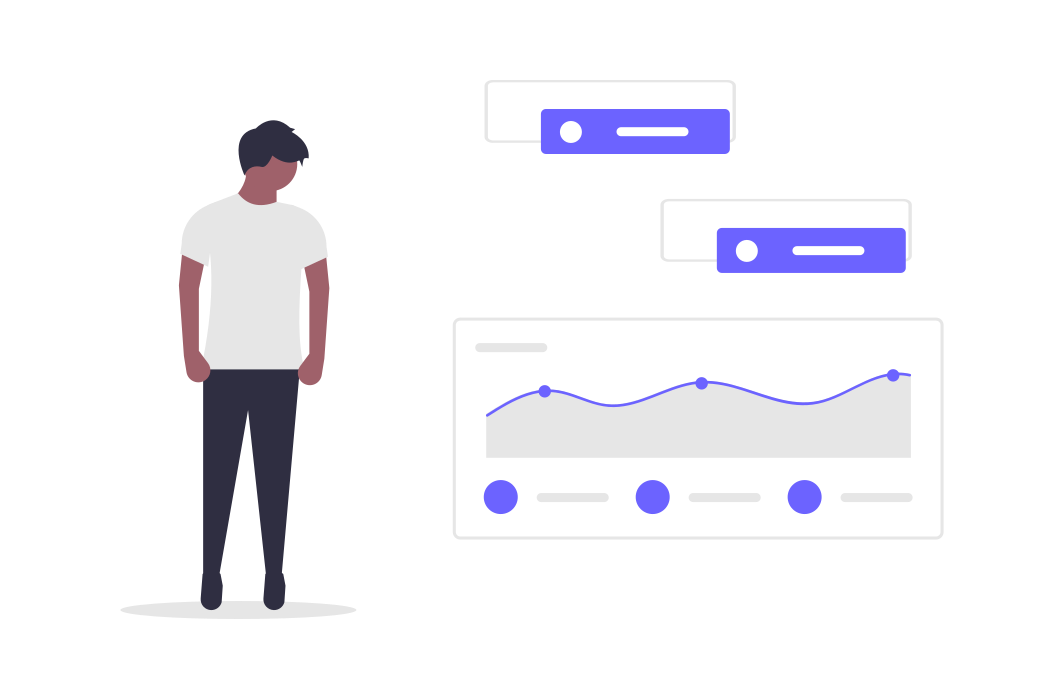In B2B marketing, targeting and engagement are essential for effective outreach, especially when aiming to convert high-value accounts with tailored strategies. Predictive analytics enhances these efforts by analyzing data patterns to forecast future behaviors, allowing marketers to reach the right audience with personalized messaging at the right time. Leveraging advanced predictive analytics can transform B2B marketing, enabling a more strategic approach to both targeting and engagement.
This blog covers advanced predictive analytics techniques that B2B marketers can use to enhance targeting precision and deepen engagement.
Leveraging Data for Audience Segmentation and Scoring
Predictive analytics uses data-driven models to segment audiences based on their likelihood to convert, engage, or show interest in specific products or services. By analyzing factors like behavioral data, demographic information, and interaction history, predictive models help marketers assign scores to leads, ranking them by engagement potential. This helps marketing teams prioritize high-potential leads for targeted outreach.
Key benefits include:
- Enhanced Precision: By identifying patterns in past interactions, predictive analytics segments audiences more precisely than traditional demographics alone.
- Prioritization: Lead scoring enables marketers to focus on leads most likely to convert, improving efficiency and maximizing resource allocation.
With audience segmentation and scoring, marketers can deliver more tailored experiences that increase engagement with high-priority accounts.
Predicting Buying Intent
Intent data reveals which prospects are actively researching products or services, indicating higher purchase readiness. Predictive analytics uses intent signals—such as content consumption, search behaviors, or specific site interactions—to determine which accounts are closer to making a purchasing decision. This insight allows marketers to focus on leads demonstrating high intent and tailor campaigns to address specific needs or pain points.
Using intent data and predictive models, marketers can:
- Optimize Timing: Reach out to prospects when they are actively researching, increasing the chances of engagement.
- Personalize Messaging: Develop targeted messaging that speaks directly to the interests of high-intent leads, improving response rates and engagement.
Intent-based targeting helps ensure marketing efforts are focused on prospects showing buying signals, increasing the likelihood of conversion.
Enhancing Personalization with Behavioral Predictions
Predictive analytics enables deeper personalization by forecasting user behaviors based on previous interactions and preferences. By understanding which types of content, channels, or products resonate most with specific leads, marketers can create personalized experiences that drive higher engagement.
Personalization with behavioral predictions includes:
- Content Recommendations: Deliver content that aligns with a user’s past interactions or inferred interests, keeping them engaged and progressing along the buyer’s journey.
- Channel Optimization: Reach leads through the channels they interact with most frequently, enhancing engagement and visibility.
Personalization rooted in predictive analytics helps create a relevant, engaging experience for each user, increasing satisfaction and strengthening brand loyalty.
Optimizing Campaign Timing and Frequency
Predictive analytics allows B2B marketers to refine timing and frequency for campaigns, ensuring that outreach occurs at the most opportune moments. Using historical data, predictive models can identify when leads are most likely to engage based on previous interactions, creating a data-driven approach to timing.
With optimized timing and frequency:
- Increase Engagement Rates: By reaching prospects when they are most likely to be active, marketers can maximize engagement potential.
- Prevent Oversaturation: Predictive insights help determine the ideal frequency of outreach to avoid overwhelming or disengaging prospects.
Strategic timing and frequency adjustments driven by predictive analytics improve the effectiveness of campaigns, ensuring leads remain engaged without feeling overloaded by communication.
Using Predictive Models for Account-Based Marketing (ABM)
Account-Based Marketing (ABM) is an essential strategy for high-value account acquisition, and predictive analytics takes ABM efforts a step further by refining target account selection and tailored engagement. Predictive models evaluate account data to identify which high-value prospects have the greatest potential, helping marketing teams optimize ABM campaigns.
Advanced predictive analytics for ABM:
- Identifies Ideal Accounts: Analyzes firmographics, historical purchase data, and industry trends to select high-potential accounts for ABM campaigns.
- Creates Customized Paths: Tailors content and outreach to match each account’s unique preferences and predicted behaviors, maximizing engagement.
By aligning ABM with predictive insights, marketers can create more relevant experiences that resonate with targeted accounts and increase the effectiveness of ABM initiatives.
Measuring and Refining Predictive Performance
Continuous improvement is essential for maximizing the impact of predictive analytics in B2B marketing. Tracking predictive model performance and refining algorithms over time ensures that forecasts remain accurate and relevant. Analyzing metrics such as conversion rates, engagement levels, and lead quality provides feedback that helps refine predictive models.
Key steps in refining predictive performance include:
- Monitoring Predictive Accuracy: Regularly compare predicted outcomes with actual results to identify areas for improvement.
- Adapting to Market Changes: As audience behaviors and industry trends evolve, predictive models should be updated to reflect new insights.
- Testing and Experimentation: Use A/B testing to validate predictive recommendations, allowing marketing teams to iterate and improve models.
With ongoing measurement and refinement, predictive analytics remains a valuable tool for guiding targeting and engagement strategies, driving better results over time.
Conclusion
Advanced predictive analytics enhances B2B marketing by enabling data-driven targeting, personalized engagement, and strategic timing. By using predictive insights to segment audiences, anticipate behaviors, and prioritize high-value accounts, B2B marketers can create campaigns that resonate more deeply with prospects. This approach not only improves engagement rates but also leads to more efficient and effective marketing efforts, positioning predictive analytics as a foundational strategy for long-term growth in B2B marketing.


